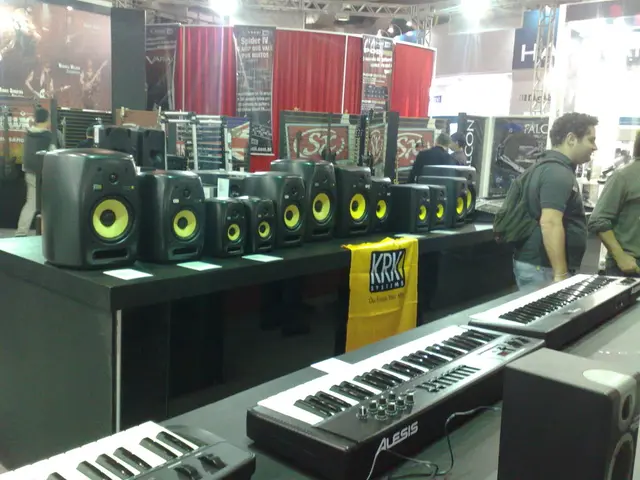Factory activity in South Korea experiences contraction for the seventh consecutive month, as indicated by PMI, due to escalated US tariffs.
South Korea's manufacturing sector faced another month of contraction in August, marking the seventh consecutive month of weak factory activity. The Purchasing Managers Index (PMI) for manufacturers stood at 48.3, slightly higher than July's 48.0, but still below the 50-mark that separates expansion from contraction.
New orders extended losses for the fifth month in August, with the drop occurring after U.S. President Trump introduced 10% baseline tariffs on all imports in April. The decline in new orders was the most significant since April, according to S&P Global.
Output fell for the sixth straight month in August, with manufacturers reporting a decline in sales and production levels due to challenging domestic economic conditions and the impact of U.S. tariffs. The U.S. trade policies have been reported to weigh heavily on external sales in South Korea, particularly for export-heavy firms in the electronics, automobile, and steel sectors.
The central bank of South Korea has signaled further policy easing to help mitigate economic headwinds. The liberal administration of President Lee Jae Myung proposed a sharp increase in budget spending to counter downward pressure. However, the PMI survey did not provide specific details about the expected impact of these measures on the South Korean economy.
Despite the ongoing challenges, South Korean manufacturers remain optimistic about the outlook for the year ahead. They cite hopes of new product launches and improvements in domestic economic conditions as reasons for their optimism. The PMI survey did not provide specific details about the extent of this optimism or concerns regarding the impact of U.S. tariffs.
South Korea's economy grew in the second quarter at the fastest pace in more than a year, driven by strong technology exports and a rebound in consumer spending. However, the declines in output and new orders suggest that the growth may not be sustained in the near term.
In August, a 15% tariff was implemented on U.S. imports from South Korea, following a trade deal that avoided a steeper 25% import duty. The PMI survey shows that manufacturers in South Korea are still concerned about the impact of U.S. tariffs on their operations. According to S&P Global, the tariffs are expected to reduce South Korea's GDP growth by about 0.45% in 2025 and 0.6% in 2026, causing significant shocks to production and sales due to increased costs and reduced export competitiveness.
In conclusion, South Korea's manufacturing sector is facing significant challenges due to U.S. tariffs and domestic economic headwinds. While the sector remains optimistic about the year ahead, the ongoing contraction in factory activity suggests that the road to recovery may be long and difficult.
Read also:
- Peptide YY (PYY): Exploring its Role in Appetite Suppression, Intestinal Health, and Cognitive Links
- Toddler Health: Rotavirus Signs, Origins, and Potential Complications
- Digestive issues and heart discomfort: Root causes and associated health conditions
- House Infernos: Deadly Hazards Surpassing the Flames








